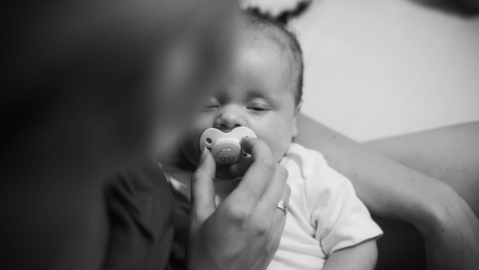Study: Black babies are less likely to die when cared for by a Black doctor

Credit: pxhere / public domain
- A new study examined nearly 2 million births in Florida from 1992 to 2015.
- The results showed that, when cared for by a white doctor, Black newborns are 3 times more likely to die than white newborns.
- The researchers said several “disturbing” factors are likely at play.
The U.S. infant mortality rate has overall been dropping for decades, but there remain significant racial disparities. Black newborns are about 2.3 times more likely to die than white newborns, according to the U.S. Department of Health and Human Services’ Office of Minority Health. Still, the precise causes have been unclear.
A new study offers insight into one little-understood factor: the race of the physician. The results showed that when the physician is white, Black newborns are three more times likely to die than white newborns. But when the physician is Black, that rate drops by roughly half.
Twittertwitter.com
The study was published Monday in the journal Proceedings of the National Academy of Sciences of the United States of America. For the study, researchers examined the birth records of about 2 million babies born in Florida between 1992 to 2015. To collect data on race, they obtained photographs of the attending physician for each birth record.
The results showed that Black newborns experienced 430 more fatalities per 100,000 births than white newborns. Under the care of Black physicians, that “mortality penalty” for Black newborns dropped to 173.
The study listed several other key findings:
- In complicated medical situations, Black newborns are even more likely to survive when the physician is Black.
- Black newborns are also especially likely to survive when cared for by Black physicians at hospitals that deliver more Black babies.
- The race of the physician didn’t impact the mortality rate of mothers.
Why might the race of the attending physician matter? Although the researchers didn’t examine the root causes of the disparity, they did mention that factors like eclampsia and preeclampsia (dangerous conditions that afflict Black women at disproportionate rates), socioeconomic inequality, racial biases, and institutional racism may play a part.
Brad Greenwood, study co-author and an associate professor of Information Systems & Operations Management Sciences at George Mason University, told USA Today that a mix of “disturbing” structural influences could be contributing to the problem.
“I don’t think any of us would suggest as co-authors that these results are manifesting as a result of malicious bias on the part of physicians,” Greenwood said. “I also think that underscores how insidious something like this is. Children are dying as a result of just structural problems.”
The infant mortality rate in the US declined 2.3% from 579.3 infant deaths/100,000 live births in 2017 to 566.2 in 2018 https://t.co/utnXfqQHZ9 #infantmortality #infantdeaths #deaths pic.twitter.com/lNaJOCG8CM
— NCHS (@NCHStats) January 31, 2020
Twittertwitter.com
One part of the problem, potentially, is that only 5 percent of doctors in the U.S. are Black, even though Black Americans represent 13 percent of the population. Still, representation is only one part of this complex issue, according to study co-author Rachel Hardeman, a reproductive health equity researcher and associate professor at the University of Minnesota.
“It could go a long ways to helping with this, but also we don’t know that the answer is necessarily that we just need more Black doctors,” she told USA Today. “We have to be thinking about the health care institutions themselves and how physicians are being trained … to think about the role of race and racism in the clinical encounter but also in people’s lives outside of health care settings.”





